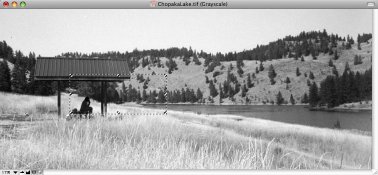The takeup spool provides a measure of positive pull on the film, but as the spool increases in diameter, it would change the distance between frames if only the spool were functional. I'm afraid that AgX is correct, the sprocket wheel is advancing the film by an exactly measured amount in both 35mm still and MP cameras. The difference is the precision with which this is done. Since the film is still in a regular 35mm camera there can be more slop in the sprocket holes to allow for easier threading.
In an MP camera, steadiness and precision are important and high speed is the norm. I have seen high speed cameras running at such high speed, that a 1000 ft roll is used up in an eyeblink. I have seen a jam of estar film in one that ripped the sprockets off the wheel and spread them around the room. The estar would not give enough and sliced the sprocket gears off. This camera, BTW, had a drive with a gear shift to get up to speed.
I used to read "The Journal of High Speed Photography" as it was one of our mainstays at Cape Canaveral, and they discuss the needs of MP for this type of precision. Tight, exact sprocket holes help supply this!
PE












